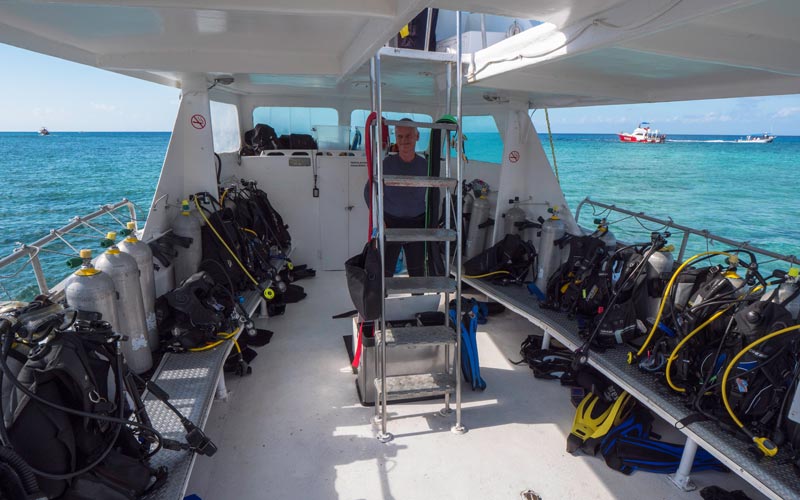
*image from Dressel Divers, a major operator in Cozumel
- Tipping
- Just Shut Up!
- What to bring?
- Before you get on
- Walking on...now what?
- Setting up - Order of operation
- Getting In - The Pool is Open!
- Getting Out - Time to Go
Tipping
How much you tip and when to tip and who to tip is all personal choice. Currently it's a divisive topic socially so you do you. Regardless of how you feel about the tipping culture, these boat crews are not making a living wage without it. Right. Wrong. Whatever...it's simply true. In my opinion tips should be part of your budget when you go diving. How much should I budget?$10 per tank "to the boat"
If you go on a "2 tank dive" that means $20. In cash. Usually there is a box somewhere on the boat you can put it in. It is then split up by all members of the crew. Some boats are now accepting Venmo or other methods of payment and you may see signs for such. I take cash regardless. Cash is always king.
If you requested a private guide/divemaster or the group divemaster did a particularly good job in the water, then I will tip an additional $5 per tank to this person. This is particularly relevant if you are staying at a resort, like in Cozumel where your divemaster may be the same person for the week of diving you are there. They will get to know you by name. Tip them directly, not in the "boat box" (above). This is why cash is preferred.
Just Shut Up!
For the love of all things holy...SHUT UP!....stop talking when someone on the crew is talking. Sure...make friends. Yes...talk to your insta-buddy. But for heaven sake...PAY ATTENTION...and when someone in the crew is talking... SHUT UP!Crew members don't talk to just talk. They are telling you something YOU need to know. Even if this is your 1,000 boat dive...SHUT UP!. There are other people on the boat who want to hear.
This is also not the time to walk around the boat and critique your fellow divers choice of equipment or setup. Honestly...nobody cares what your opinion is. If you see something interesting, sure...maybe ask them about it as a way of getting to know them. However, asking a question so you can tell them they are wrong is not what you should be doing. Worry about your own self.
However....if you see something dangerous then of course say something. Someone using a jacket BCD instead of a BPW is not "dangerous". Someone with a compass hanging from a Dring instead of on their wrist is not "dangerous". You're just being an ass and everyone can tell. Stop it.
What to bring?
In short...as little as you can.Look at the picture above...you will have room for your butt on a bench and something below your butt under the bench. Nothing else. Large crates, however cool they may look, are inappropriate. Large dive bags the size of duffles...also inappropriate.
It is totally possible to dive 7 days in Cozumel off a boat that looked exactly like the one above and only take on board the things below...
- BCD or BPW
- dSMB
- Mirror/Whistle
- Regulators
- Wetsuit
- Fins \w boots
- Small Dry Bag for (phone, cash, ID, etc)
- Small Day Bag
- Small save-a-dive kit
- Computer
- Mask + DeFog
- Towel
- Sunscreen
- Bottle of Water
- A boat coat or hoodie/sweatpants if things could get cold
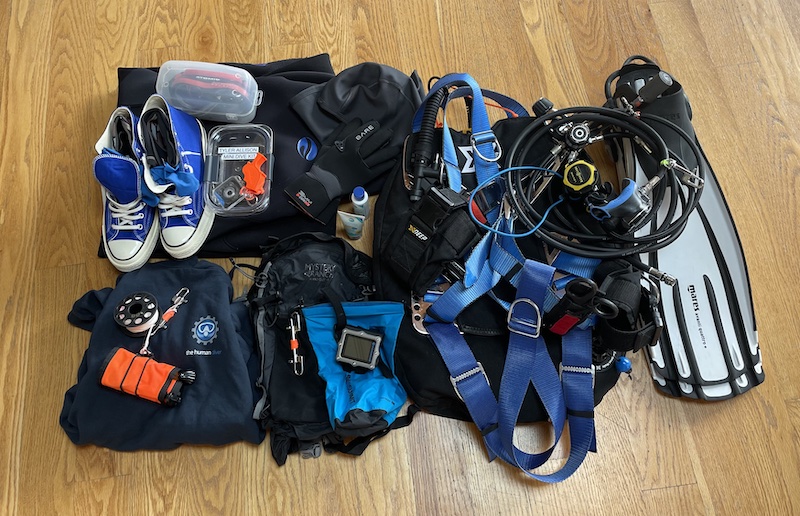
12 Hours Before You Get On
- Take Dramamine...don't try and be cool...take the Dramamine
- Use your checklist to make sure you have everything
- Hydrate...drink water
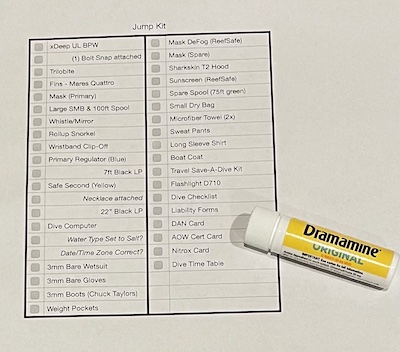
Right before you get on
- Put fins in the tank straps of your BCD
- Fill your water bottle
- Put your wetsuit on up to your waist and tuck the arms into the front so they don't drag
- Put on the shoes you are going to wear with your fins.
- Put the BCD on your back
- Put regulators in one hand
- Put daybag in the other hand
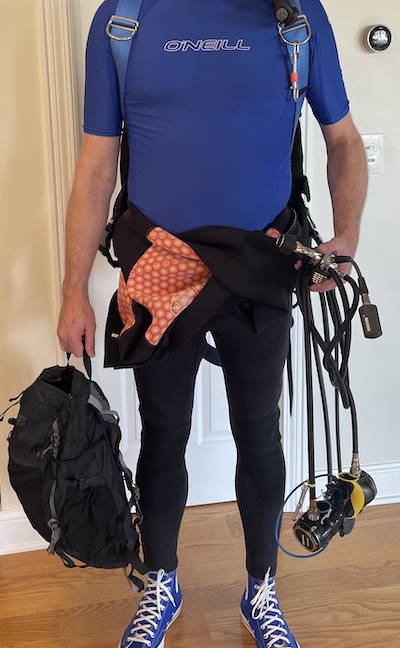
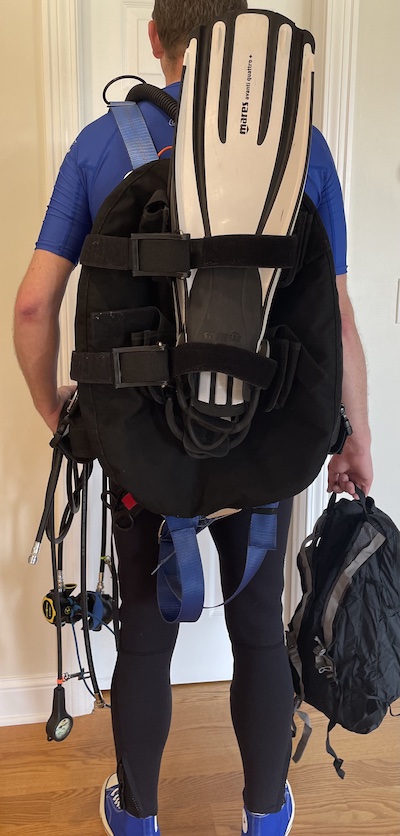
Walking on...now what?
Get on when you are told to get on. Not before. Not after. Pay attention.- Walk up to the side/back of the boat and step on
- Ask the person who looks to be in charge where they want you. Not all positions on the boat are identical. Generally no...you can't just rush on and pick a spot because you like "the window", this isn't Southwest Airlines. Some tanks could be nitrox, some could be doubles, some could be a different blend, someone on your trip could be disabled and need a special seat. Don't assume....ask.
Setting up - Order of operation
- Put the bag and regulators on the bench spot you are assigned. Not on the floor. Not next to your space. IN YOUR SPACE Watch for crush damage by yourself or neighbors.
- Spin the BCD around and remove the fins and place them under your bench spot. Anything you put under the bench will get wet
- Remove the bungee around the tank with one hand while holding the BCD and tank from falling
- Slide BCD over the tank and secure tank straps
- ...Your hands are now free...
- Place the 1st stage regulator on your tank
- Open the tank and listen for leaks - notify someone of any leaks BEFORE you leave the dock if at all possible
- Place the 1st stage regulator on your 2nd tank of the day (if 2 tank diving)
- Open the tank and listen for leaks - notify someone of any leaks BEFORE you leave the dock if at all possible
- If Nitrox...close tank, depressurize and remove 1st stage so an air check can be done
- Re-Attach the bungee straps...NEVER walk away from your tank if the bungee is removed
- Take small drybag out of your day bag and boltsnap it to your "2nd tank" if on a two tank dive - position to protect it against crush damage
- Take mask and computer out of your day bag and attach them to your BCD in some way. DO NOT place them on the bench as they will get damaged eventually.
- Zip up your day bag and place it out of the way of the dive area. Possibly up near the front of the boat in a "dry" area. DO NOT put it below your seat. It will be soaking wet by the end of the day.
- Now...Get. Out. Of. The. Way...of everyone else
Getting In - The Pool is Open!
It is almost a certainty that you will be doing a Giant Stride entry. The only thing you really must get right is you must be positively bouyant. That means...when it is your turn to stand up and move forward...INFLATE YOUR BCD!!.Getting Out - Time to Go
It is almost a certainty that you will be coming up a ladder. There are several different types of ladders, so pay attention to the dive briefing. They will tell you if you should come up the ladder with your fins on or off. Regardless, the two most important things to remember are:- Do NOT crowd the ladder. If the person in front of you falls backwards you are going to get an air tank to the face.
- Your regulator stays in your mouth until you are fully up the ladder and have taken several steps into the boat
